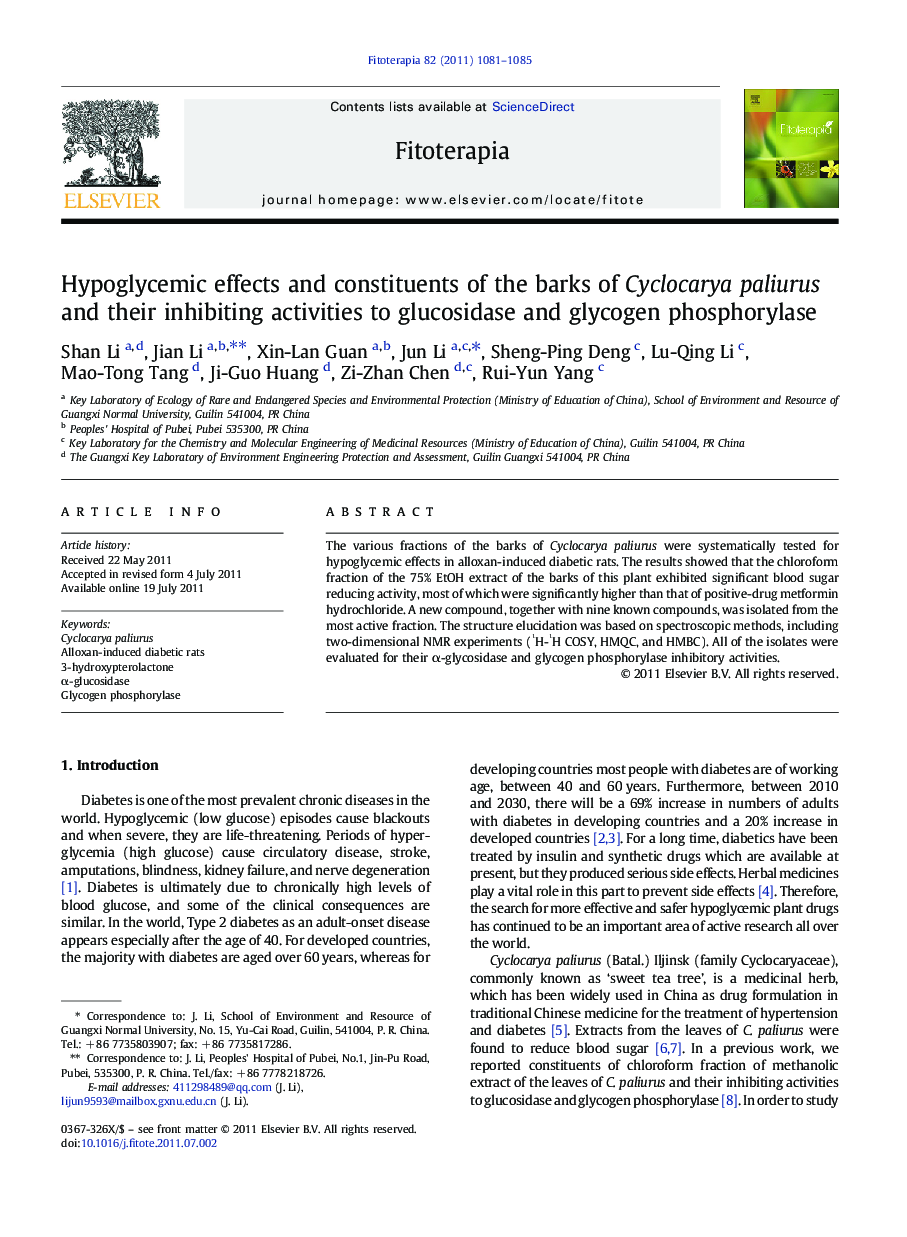| Article ID | Journal | Published Year | Pages | File Type |
|---|---|---|---|---|
| 5831575 | Fitoterapia | 2011 | 5 Pages |
The various fractions of the barks of Cyclocarya paliurus were systematically tested for hypoglycemic effects in alloxan-induced diabetic rats. The results showed that the chloroform fraction of the 75% EtOH extract of the barks of this plant exhibited significant blood sugar reducing activity, most of which were significantly higher than that of positive-drug metformin hydrochloride. A new compound, together with nine known compounds, was isolated from the most active fraction. The structure elucidation was based on spectroscopic methods, including two-dimensional NMR experiments (1H-1H COSY, HMQC, and HMBC). All of the isolates were evaluated for their α-glycosidase and glycogen phosphorylase inhibitory activities.
Graphical abstractThe various fractions of the barks of Cyclocarya paliurus were tested for hypoglycemic effects in alloxan-induced diabetic rats. A new compound, 3-hydroxypterolactone, together with nine known compounds were isolated from the most active fraction. α-Glycosidase and glycogen phosphorylase inhibitory activities of compounds was also tested. Download high-res image (312KB)Download full-size imageResearch Highlights⺠Hypoglycemic effects of the barks of Cyclocarya paliurus were investigated. ⺠Activity-guided isolation led to the discovery of 10 compounds including a new one. ⺠All of the isolates were evaluated for their α-glycosidase and glycogen phosphorylase inhibitory activities. ⺠Vanillic acid (3) exhibited medium inhibiting activities against two enzymes.
